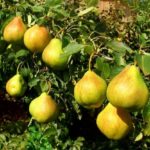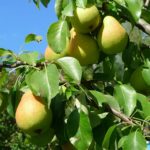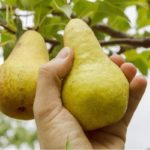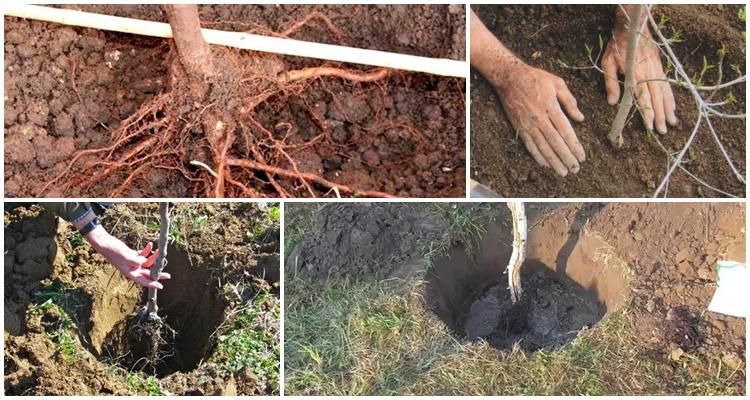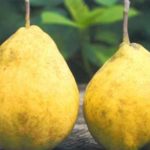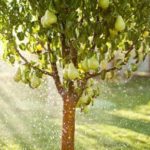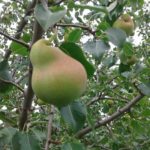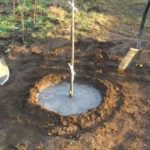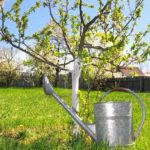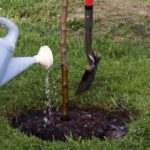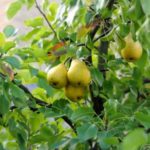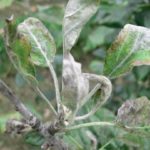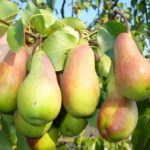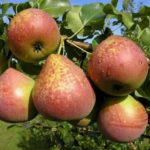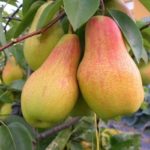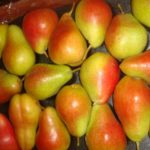The pear is traditionally considered a southern tree. However, the works of modern breeders today make it possible to grow fruit in the central and even northern regions. For example, the appearance of the Permyachka pear variety made it possible to grow high-quality fruits in areas with not too hot summers and snowy winters. That is why it is worth getting acquainted with this amazing variety.
Description and characteristics of Permyachka pear
The variety was bred by the Ural breeder Leonid Kotov.The scientist was involved in creating varieties of fruit trees suitable for cultivation in the middle zone, as well as in the Urals and Siberia. Permyachka combines exceptional winter hardiness with productivity and ease of care, which is why the variety has become popular among gardeners. She is a worthy product obtained from crossing the Cosmic, Elena and Tema varieties.
The tree of this pear variety is tall (up to 5 meters), with a powerful trunk and a spreading pyramidal crown. Branches with a large number of dark green, shiny leaves, shaped like a boat.
This is a mid-season summer variety. Fruits weighing from 160 to 200 grams, sweet dessert taste. The ribbed, bell-shaped fruits are rich green in color; when fully ripe, they become yellowish, some with a pink blush on the side.
Pros and cons of the variety
Permyachka grows in the Central region; the Moscow region, Southern and Middle Urals are suitable for it.
This variety has strong immunity, but with an abundance of moisture and cloudy days it can suffer from scab, fruit rot, and powdery mildew. In this case, treatment with fungicides, pruning and burning of affected branches and leaves is necessary.
Subtleties of growing a tree
The presence of Severyanka or a tree of another variety nearby increases the yield of Permyachka.The tree does not grow well in saline areas and acidic soils.
Preparatory work before planting
Choose a healthy seedling, pay attention to the trunk and roots, they should not be damaged. When the bark is peeled away, a bright green inner layer should be visible. Annual trees are planted, since 2-year old trees take root less well when planted.
Before planting, the roots are treated with an antifungal compound and a growth stimulator. You can keep the roots in a clay mash. Choose sunny areas protected from the wind for planting.
Landing
It is better to plant Permyachka in the spring; in the Central and more northern regions, the seedlings will not have time to take root during autumn planting. The pits are prepared in the fall, the size is 60x80 centimeters. You can plant from late March to early May, depending on weather conditions.
A layer of gravel and broken brick is poured onto the bottom of the finished pit, which serves as drainage. The soil is mixed with humus, phosphate and potassium fertilizers are added.
A mound of soil is poured into the hole, and a peg is stuck at a distance of 20 centimeters from its top. The roots of the seedling are spread over the soil mound and the hole is filled with earth, compacting the soil. The root collar is left 5 centimeters above the surface. A tree trunk circle is formed, then the seedling is watered with 2-3 buckets of warm water. The soil around the seedling is mulched.
Further care of the crop
The tree needs pruning, watering, fertilizers, protection from diseases and pests.
Trimming
It is carried out in autumn and spring. Remove dry and diseased branches, branches growing downward; the strongest one is left if two of them are located next to each other. Branches facing the trunk are trimmed. Do not cut off more than 25% of the branches at once.
Watering
Young and flowering trees are watered weekly, the rest - 2 times a month.Permyachka loves abundant watering; it is better to water the trees with warm water.
Feeding
In the first 2 years after planting, the pear tree is not fertilized. Then, in early spring, nitrogen fertilizers are applied, before flowering and during the period of fruit formation, phosphate and potassium fertilizers are applied. In the fall, the tree trunk circle is dug up, adding peat, humus, and rotted manure. To facilitate the penetration of fertilizers to the roots, a groove 20-30 centimeters deep is dug along the border of the tree trunk circle and fertilizers diluted with water are added into it.
Protection from diseases and pests
For scab and fruit rot, the tree is treated with 1% Bordeaux mixture, "Skorom". For rust, “Topaz” and “Horus” are suitable. Suitable insecticides are used against pests. All drugs are used in accordance with the manufacturer's instructions.
Harvesting and storage
After ripening, the fruits are stored for 10-12 days. When transporting, they should be removed before they are completely ripe.
Pears are eaten fresh, jams and liqueurs are made from it, dried and canned. Children and adults love it, and the appearance of varieties growing in the northern regions especially pleases gardeners, allowing them to enjoy fruit grown in their own garden plot.

